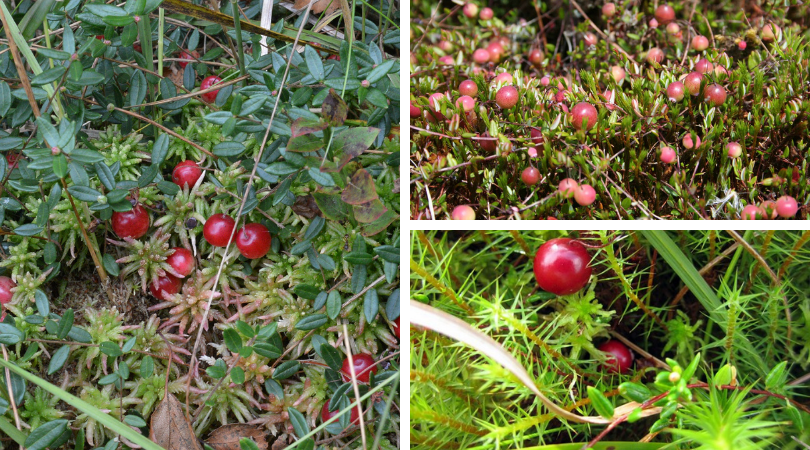Wild cranberry (Vaccinium oxycoccos) is a low creeping perennial shrub with small evergreen leaves. The flower buds start out as deep pink, but as the buds open, the flowers become lighter in color. The flowers and berries grow in clusters at the ends of the branches and the plants reach heights of about 6 inches. Found in the Pacific Northwest, Canada, and upper midwestern and northwestern states, its habitat is typically moist to very wet soil that is nitrogen-poor, which is characteristic of bogs!
Wild cranberry regenerates by sprouting from rhizomes and self-pollination, but pollination by insects (especially bees) increases seed production. Its fruit is not overly attractive to big game animals, but birds like pheasants, grouse, and small mammals (chipmunks, squirrels, and rabbits) are more likely to eat it.
Small cranberry fruits are flavorful and are often used to make jams and jellies. However, they are seldom abundant enough to be gathered in large quantities and are not used in commercial production.
Indigenous groups, like those of the Coast Salish, use the berries, twigs, and bark for many purposes. The Cree, North American Indigenous people of now Canada, boil the fruit to dye porcupine quills for clothing and jewelry. The Chippewa, native people to what is currently southern Canada and upper midwestern United States, use the berries as bait to trap snowshoe hare. Another way Native cultures prepare cranberries is in a caloric-rich food called pemmican, which is a mixture of tallow, dried meat, and sometimes dried berries, like cranberries.



Recent Comments